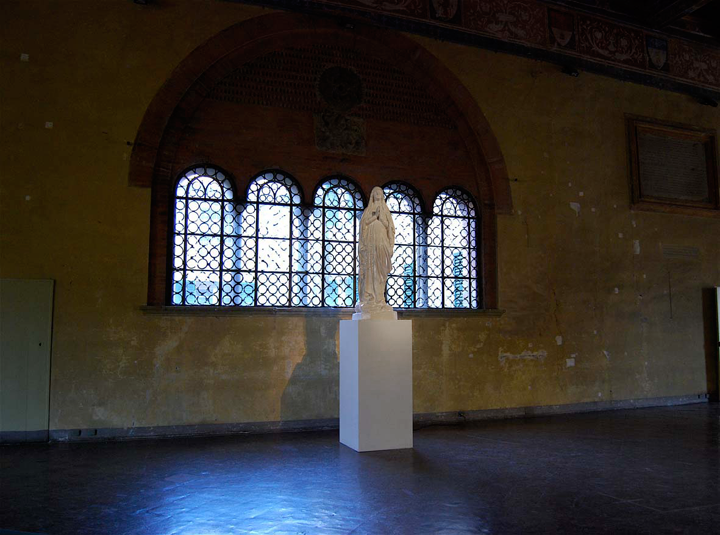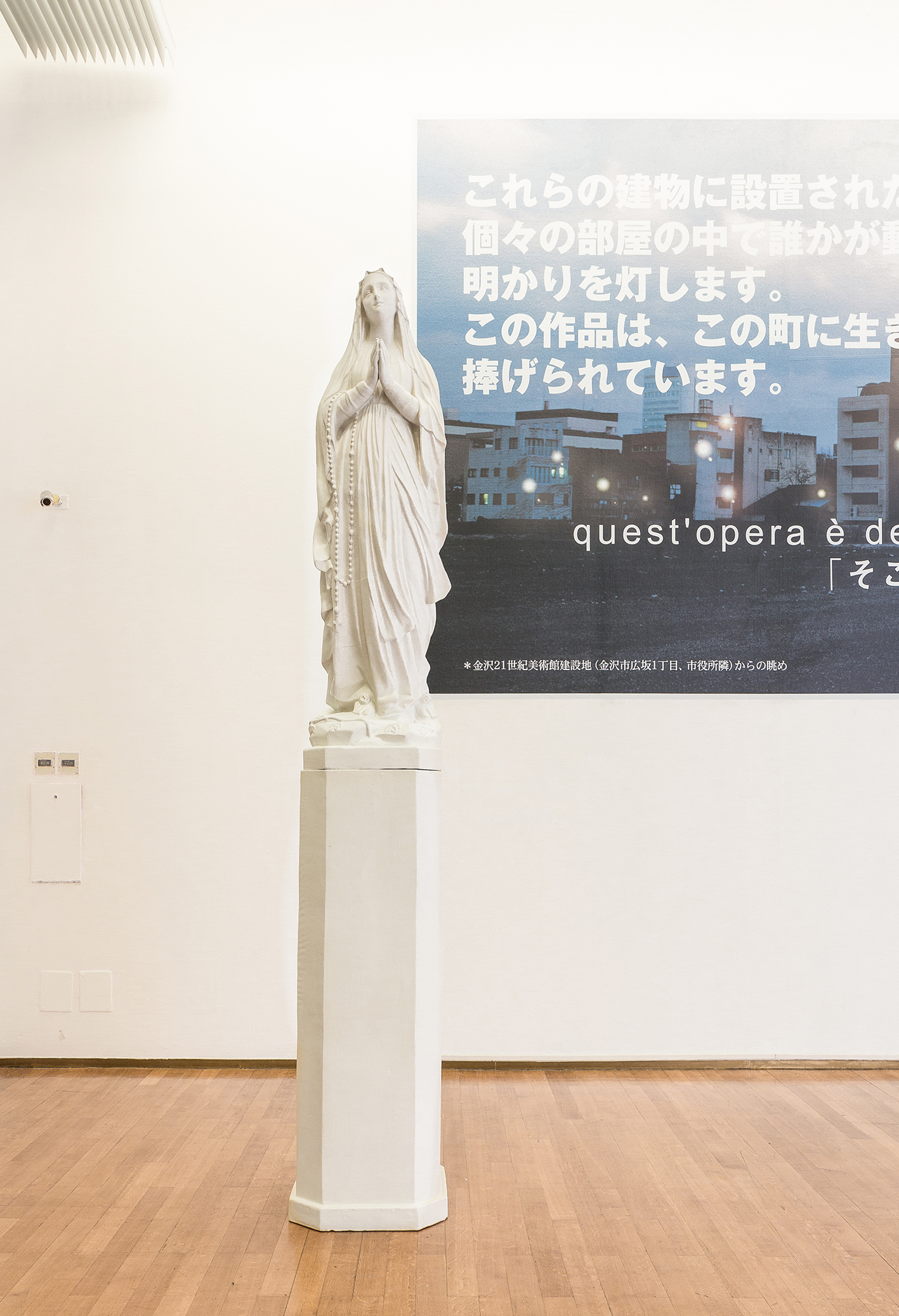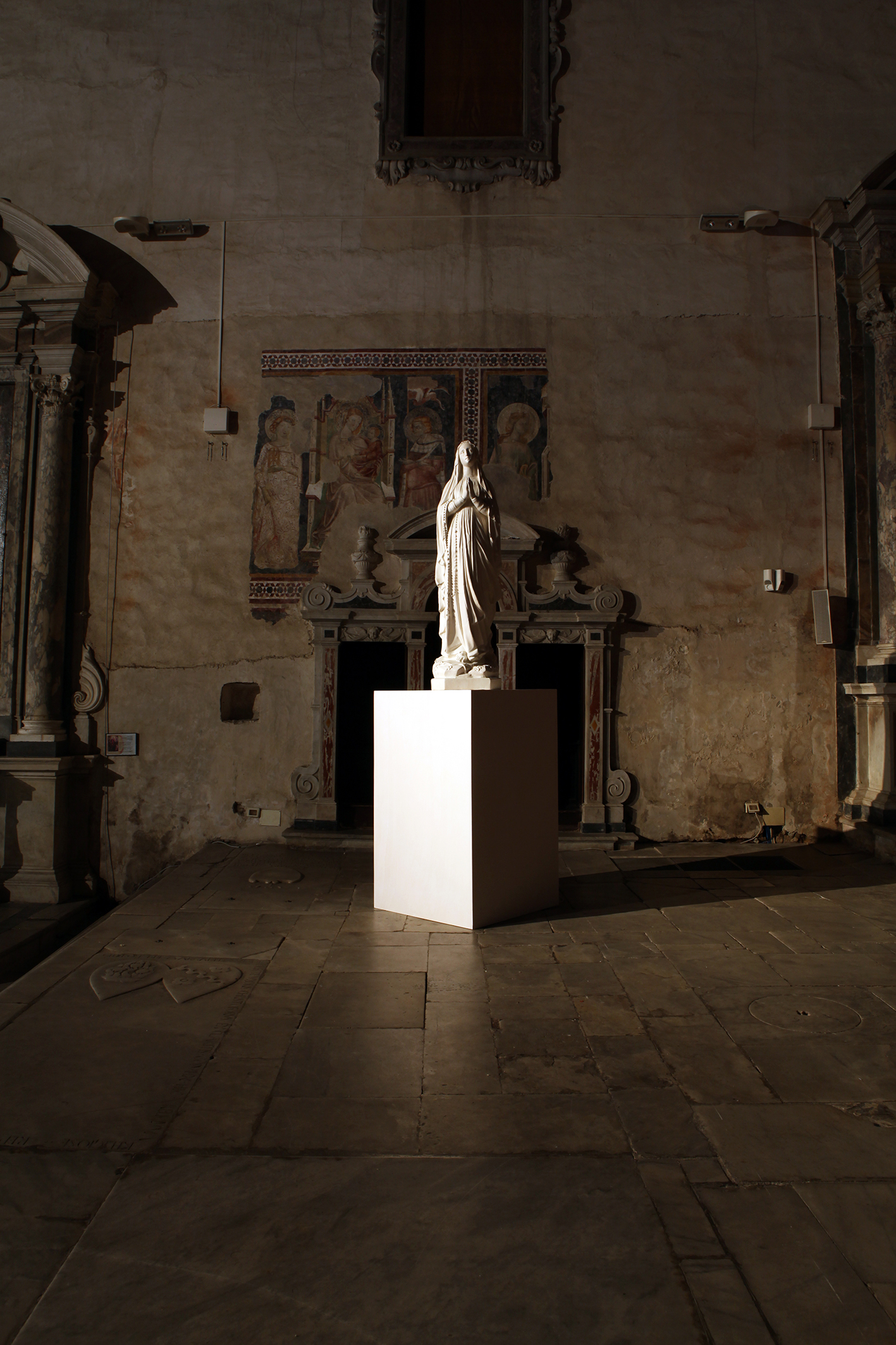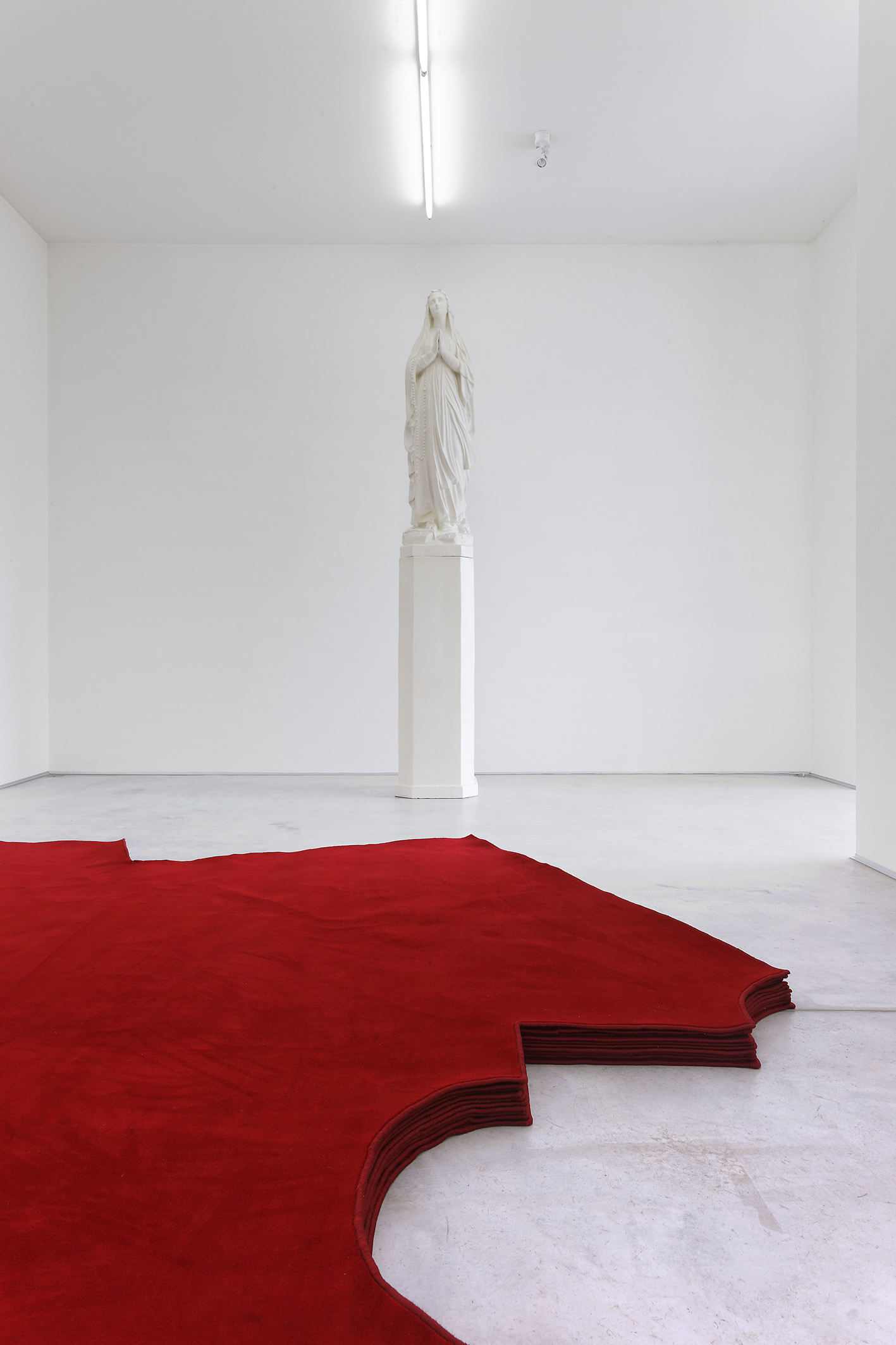“Artist’s residence – Workshop on ceramics in contemporary art: 7th edition”, organized by D. Lotta, Residenza Municipale, Faenza, 2007
Madonna
The work is the result of a commission received by the artist in the context of the iconographic program of the Nuova Chiesa (New Church) annex of the parish of Trezzano sul Naviglio (MI). The artist made a white ceramic copy of a 19th-century statue of the Madonna, a work closer to the language of the ready-made than to any real reflection on the medium of sculpture. Inside the statue, in a hollow part, he then inserted a device that warms it to the temperature of 36.7°C, the same temperature as the human body.
The idea starts with the spontaneous ritual practiced by the faithful, that of touching a holy statue. Addressing the Christian need for materialization of the divine, through a minimal alternation of the “physical nature” of the object, the artist acts on the behavior of the worshipper, adding an unexpected experiential aspect to a devotional gesture.
“I accepted the challenge of interpreting a sacred icon that has been the subject of so many extraordinary works in the past – the artist says – because I was interested in touching the world of popular culture without modifying or disrupting its symbolism, sticking with tradition yet experimenting with a new language”. As in many of his public artworks, here too the artist applies a methodological process he defines as “Macchiavellian”: the work touches the sensibilities of citizens through its rooting in the social setting of reference, while also turning to the languages of contemporary art for an interpretation that remains independent of that setting. The piece takes on an aura granted by the fact that it is both an object of worship and an artwork.
This work continues the exploration begun by the artist with the pieces done at the Certosa di Padula (SA) and the Church of SS. Pietro e Paolo in Buonconvento (SI) of that need for lay spirituality our contemporary society expresses in a wide range of ways. His aim is not to come to terms with themes linked to religion, but to investigate the urge for “artisticity”, toward visual production, which every form of mysticism inevitably requires to manifest itself in reality.






